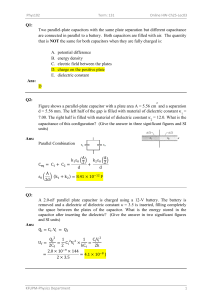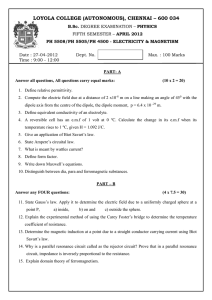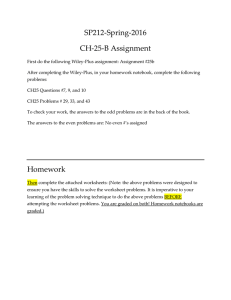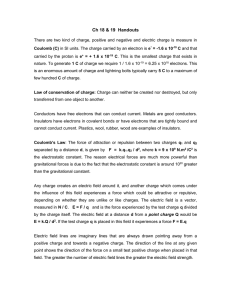Energy of a Static Electric Field - Department of Physics | Oregon
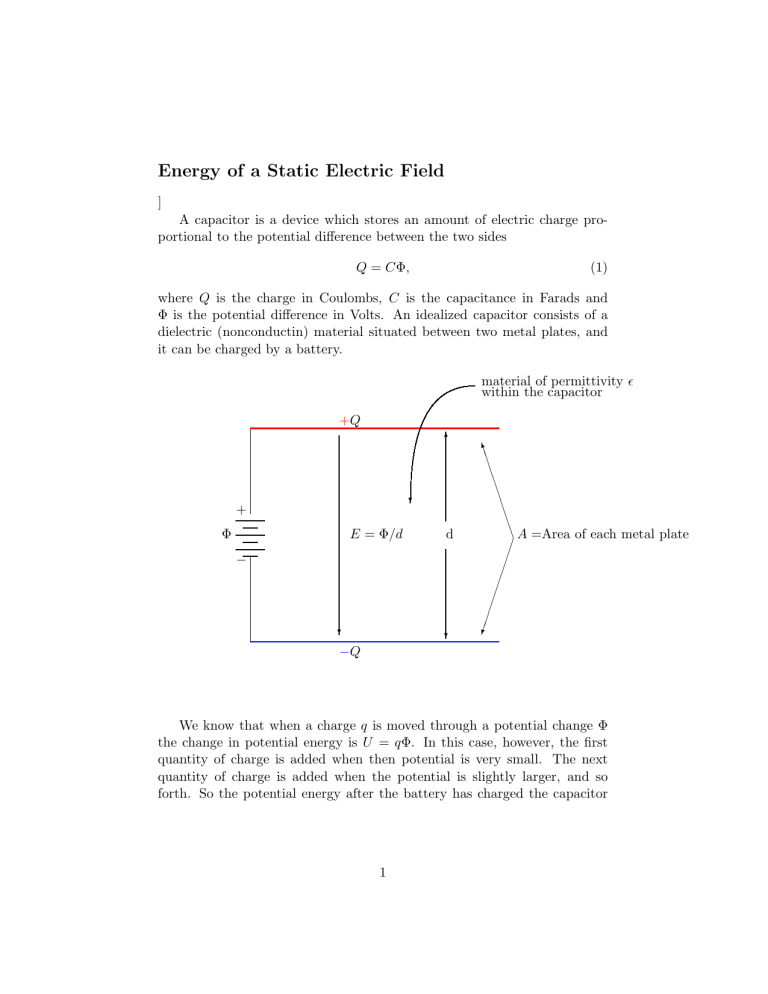
Energy of a Static Electric Field
]
A capacitor is a device which stores an amount of electric charge proportional to the potential difference between the two sides
Q = C Φ , (1) where Q is the charge in Coulombs, C is the capacitance in Farads and
Φ is the potential difference in Volts. An idealized capacitor consists of a dielectric (nonconductin) material situated between two metal plates, and it can be charged by a battery.
material of permittivity within the capacitor
+ Q
6
Φ
+
−
E = Φ /d
?
d
BM
B
B
B
B
B
B
B A =Area of each metal plate
?
− Q
?
We know that when a charge q is moved through a potential change Φ the change in potential energy is U = q Φ. In this case, however, the first quantity of charge is added when then potential is very small. The next quantity of charge is added when the potential is slightly larger, and so forth. So the potential energy after the battery has charged the capacitor
1
to the potential Φ is
U =
Z
Φ
0
Q ( ˆ d
Z
0
Φ
C
ˆ d
1
2
C Φ
2
.
The charge on the capacitor for a given applied potential is
Q = C Φ ,
(2)
(3) where the capacitance C is defined as
C =
A
.
d
(4)
In this relation, A is the area of each metal plate in m 2 , d is the distance between the plate in meters and is the permittivity of the material. The dielectric constant K e of the material is related to through
= K e o
, (5) where o
= 8 .
85 × 10
− 12
C
2
/N m
2 capacitor can then be written as
= 8 .
85 pf /m . The potential energy of the
U =
1
2
C Φ
2
1 A ( dE )
2
=
2 d
=
E
2
V = uV,
2
(6) where V = Ad is the volume in m
3 and u is the energy density in J/m
Thus, wherever there is a static electric field, there is the energy density
3
.
u =
E
2
.
2
(7)
The dielectric constant of a material is a measure of how polarizable it is, that is, how far on the average the positions of all the negatively charged electrons can be shifted relative to the positions of the positively charged nuclei. The electric field
~ within the capacitor above creates the polarization
~
, or dipole moment per unit volume within the dielectric material, through the relation
~
= χ e
~
.
(8)
The dielectric constant K e is derived from the susceptibility through
K e
= 1 + χ e
.
(9)
A metal, which is an electrically conducting material, would have a dielectric constant of ∞ when the electric field is static, while dielectric materials have values shown below.
2
Dielectric Material vacuum air polystyrene mica water
SrTiO
3
Dielectric constant K e for static field
1
1.00054
2.6
5.4
80
310
3


